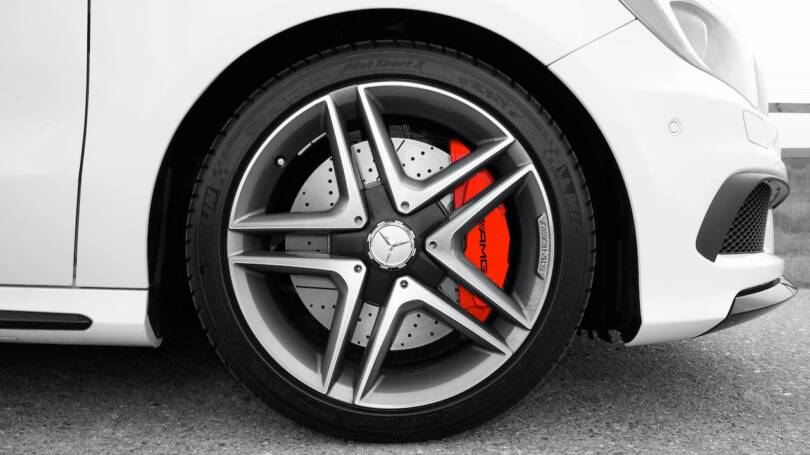The wheel has been with us for many thousands of years – since around 3,500BC, it is estimated. The tyre, by contrast, is much younger, having been an innovation of Robert William Thompson in 1845. He hit upon the idea of coating the hard wooden wheels of the time with rubber tubes held in place with leather bands, which was – softer, bouncier and – he hoped – much more comfortable for those people bouncing around uncomfortably in carriages and carts. These rubber-coated wheels were considered to be dressed – or attired to use a different word. Soon ‘attired wheels’ were shortened to the US ‘tires’ and the UK ‘tyres’ – and this is still what they are called today! Here’s a brief overview of the evolution of the tyre, from humble beginnings to today’s state of the art tyre designs.
Performance: From Solid to Air-Filled
It was Karl Benz (one half of Mercedes-Benz) who hit upon the idea of transforming tyres once more. Rather than using solid rubber which – while certainly being much more comfortable than plain wooden wheels – were still not the most comfortable ride, being rather jolty and hard on the posterior after a hard day’s travels. Instead, he found a way to manufacture steel wheels onto which thinner rubber tubes were fitted, these tyres then being filled with air for a much more gentle ride. The much-improved performance of these tyres made them a sure-fire hit and by the time solid rubber tyres had fallen from grace. If you are someone who is looking for tyres then we recommend getting your hands on quality tyres from Eco Tyres Stevenage Centre to enjoy the best tyre performance, safety and sustainability on the market today.
Safety: A Mild Clash of Patents
A year or so after Robert William Thompson hit upon his idea for tyres, John Boyd Dunlop arrived at a very similar idea for cycles, making the forefathers of tyres that could be inflated to required levels. Being able to increase or decrease inflation levels as desired made it infinitely safer to drive in slippery conditions. Unfortunately for Dunlop, he was refused a patent because of the pre-existing one belonging to Thompson, and ultimately never earned a great deal of money from tyres, despite his name being affiliated, even today, with one of the big names in the tyre industry. Modern tyres are carefully engineered to work at only the recommended (narrow) range of inflation levels, so there is no need to calculate the safest inflation level on any given road. Simply inflate tyres to the correct levels and you are good to go.
Sustainability: A More Modern Concern
Modern sensibilities tell us that we must be mindful about the resources we use as they are precious and finite. As a result we tend to use non-Amazonian rubber from sustainable sources – and even synthetic rubber substitutes which are durable and long-lasting as well as using entirely renewable materials in their manufacture.
The evolution of the tyre has been shorter than many of us realise, but it has been dramatic: those early pioneers of road comfort would be amazed – and one hopes, delighted! – to see modern tyres in all their quiet, comfortable glory!









